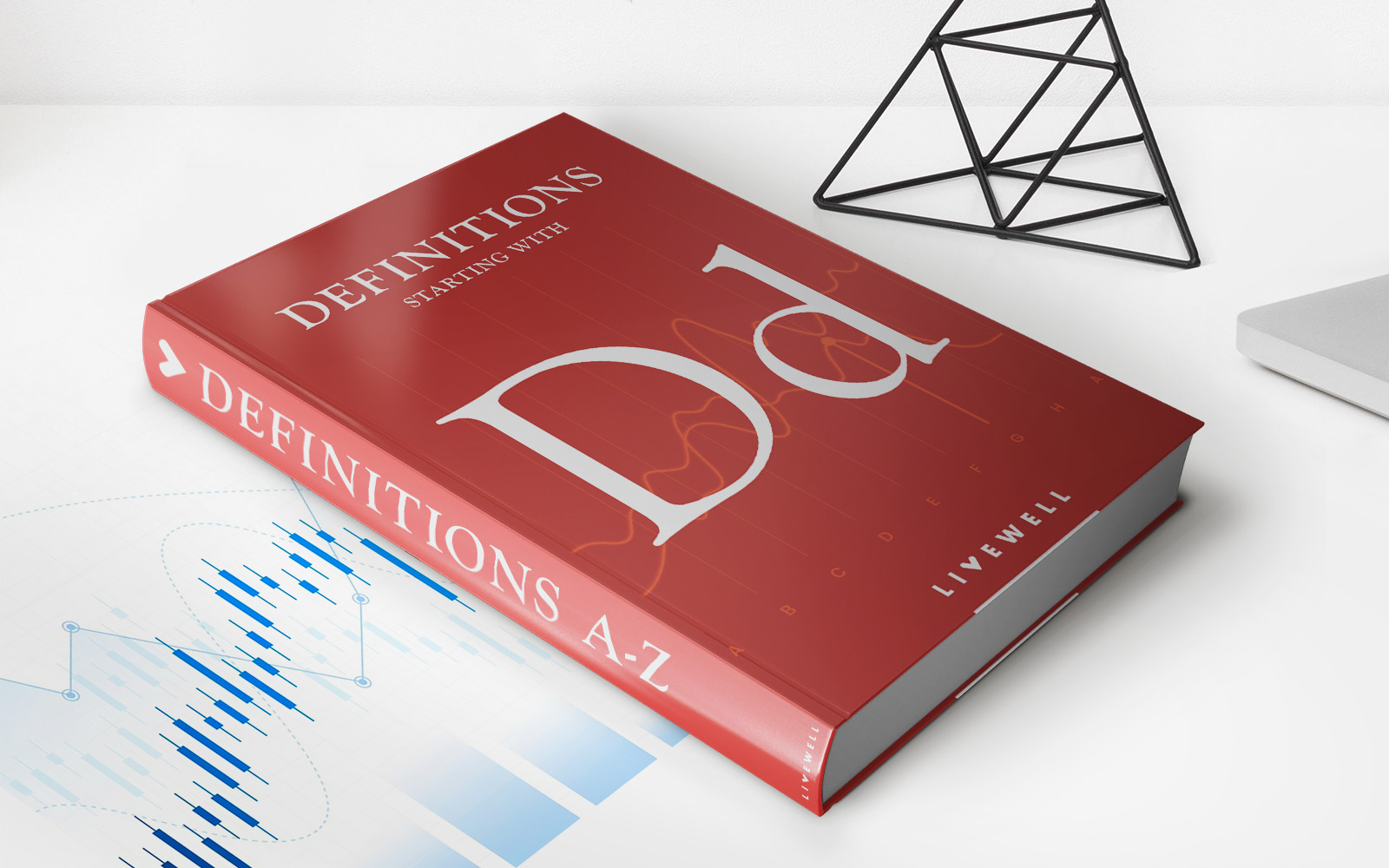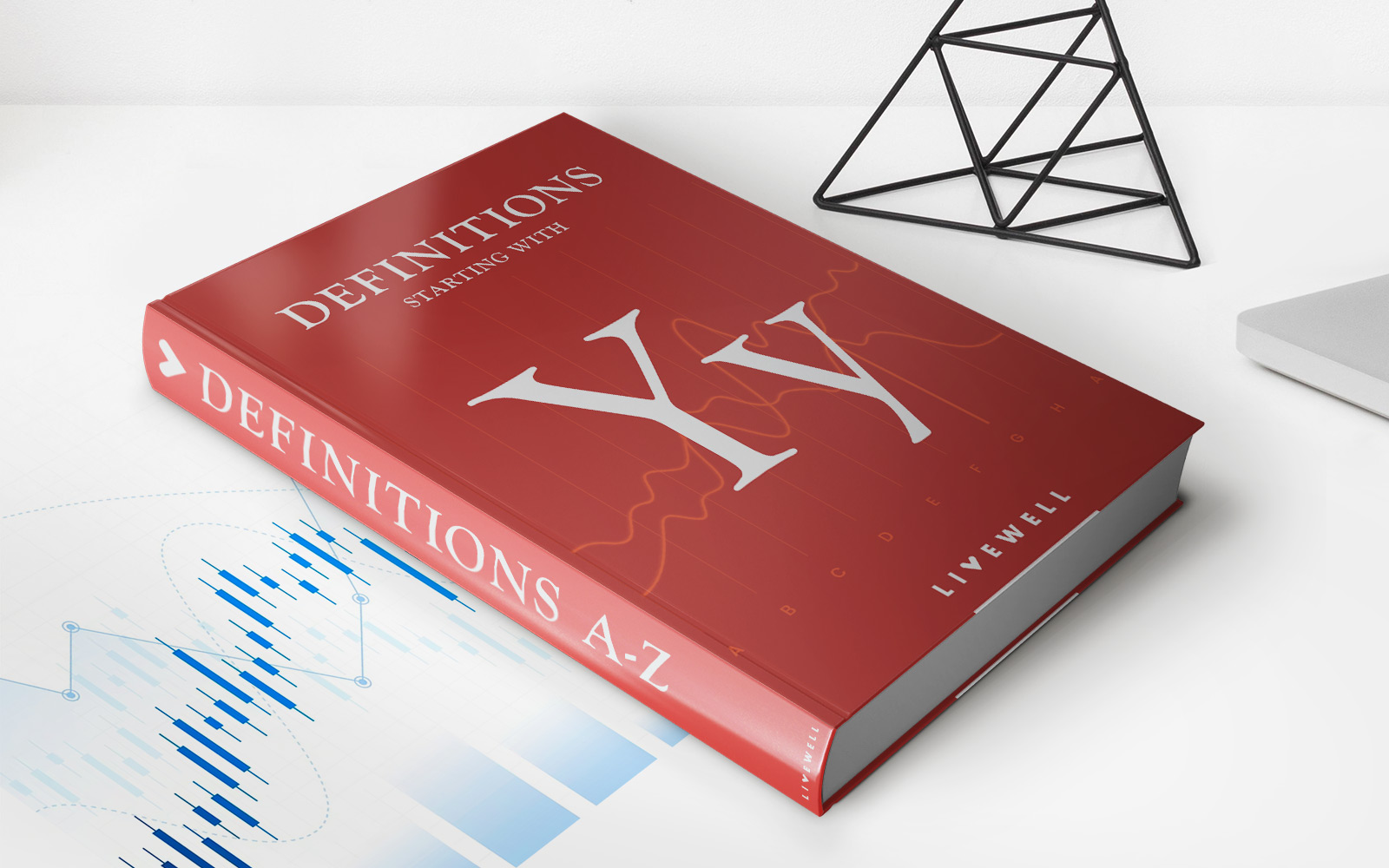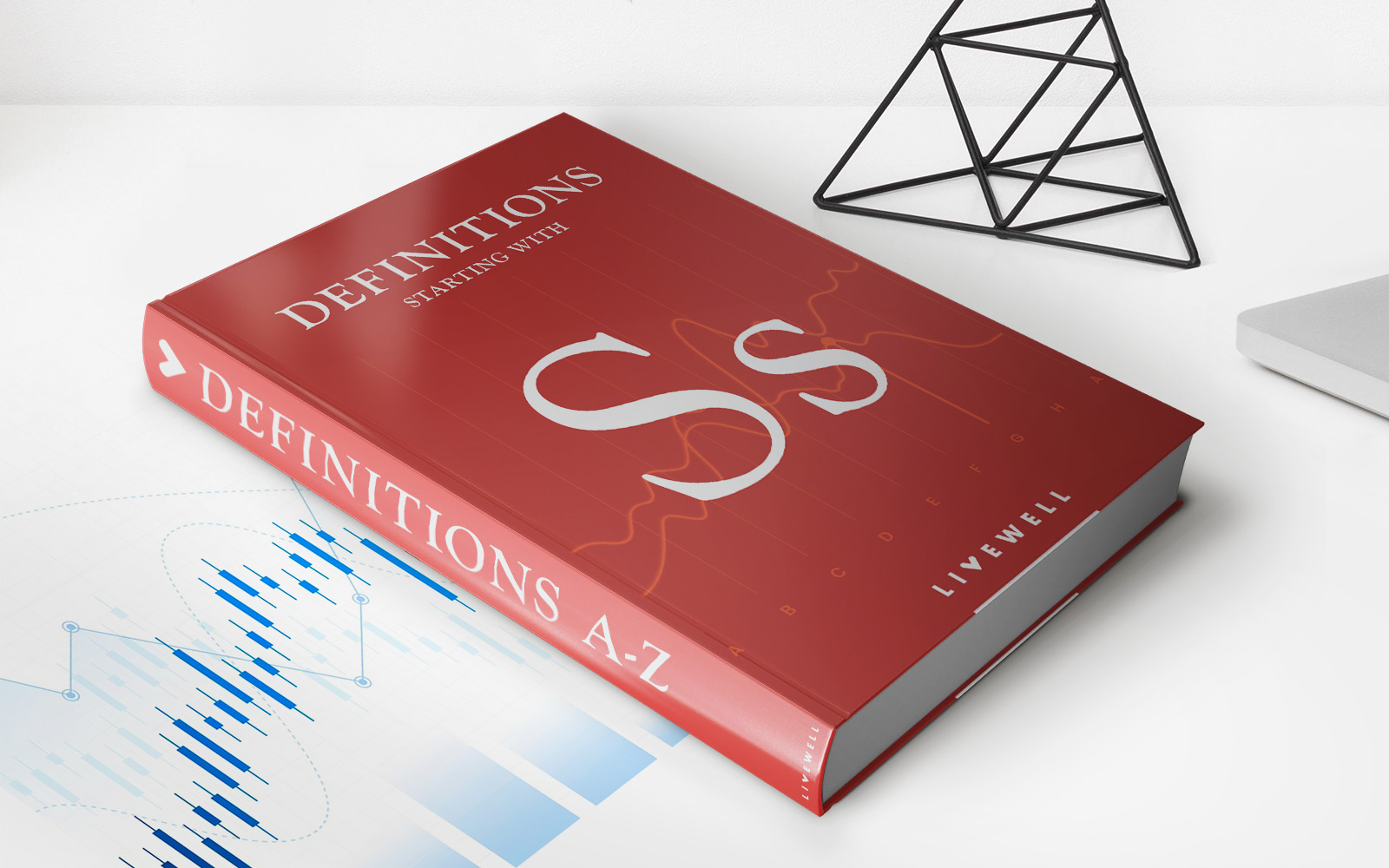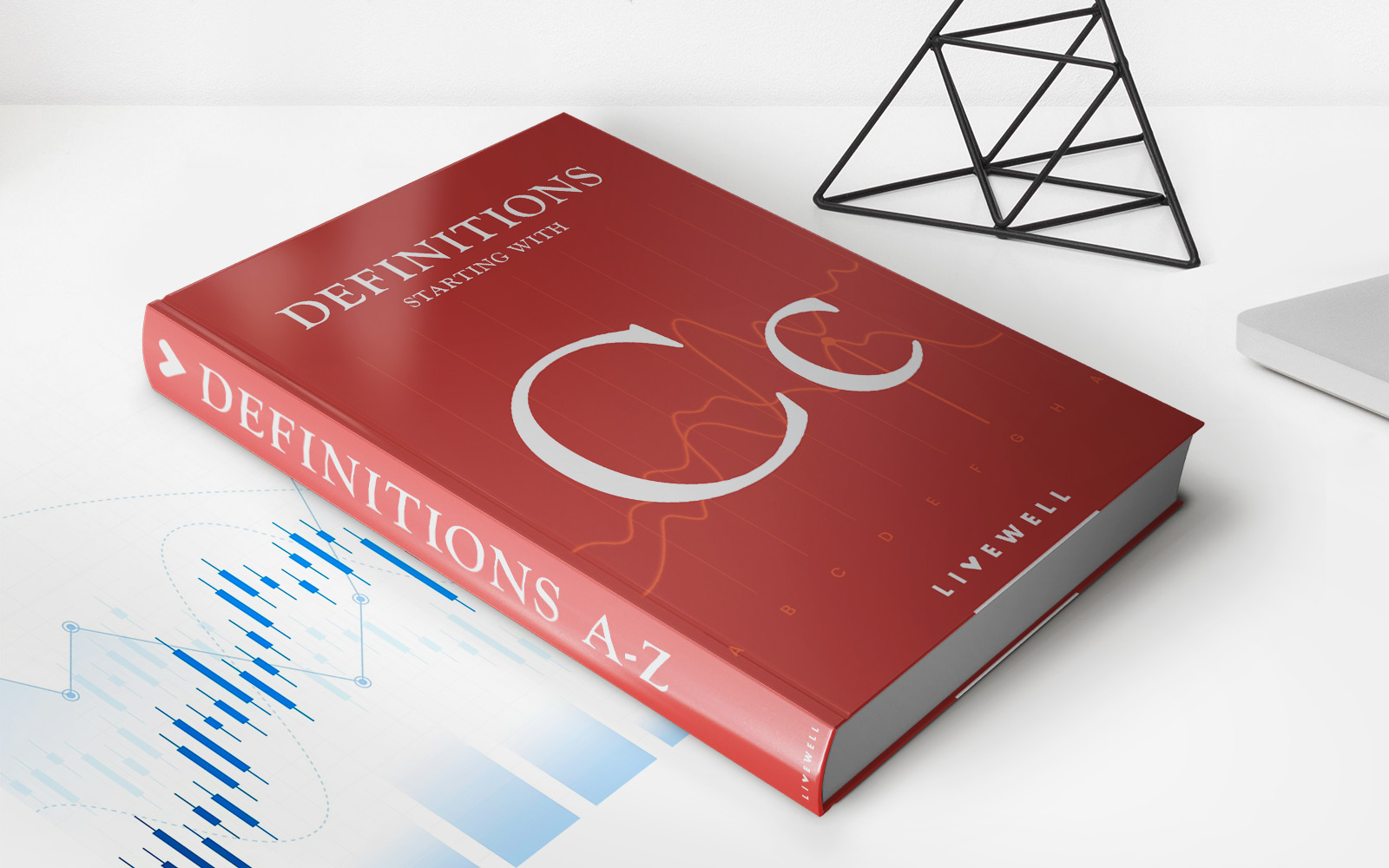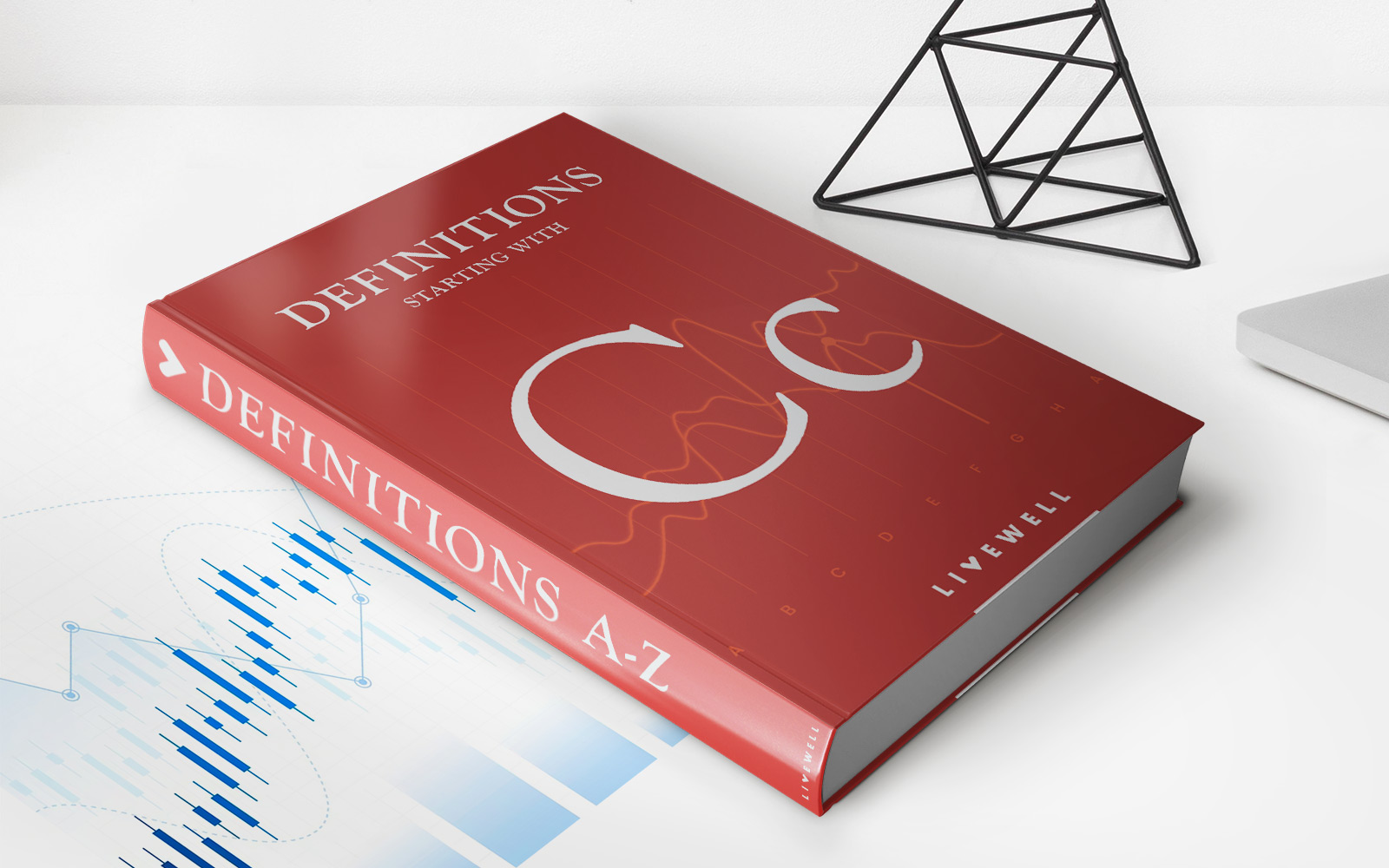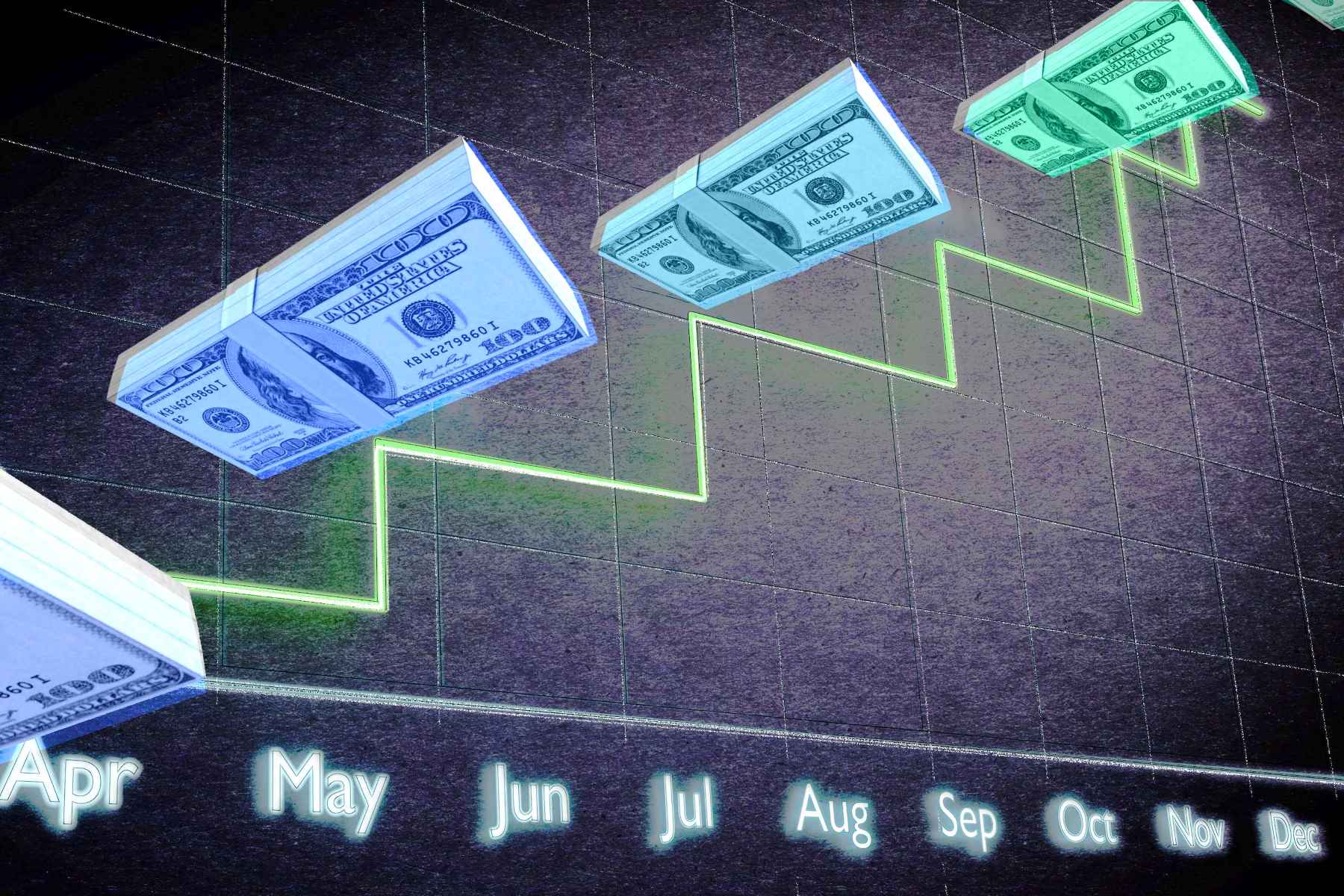

Finance
How Long Will 401K Last
Modified: February 21, 2024
Learn how long your 401K can last and secure your financial future. Expert advice and tips on managing your finances for a secure retirement.
(Many of the links in this article redirect to a specific reviewed product. Your purchase of these products through affiliate links helps to generate commission for LiveWell, at no extra cost. Learn more)
Table of Contents
- Introduction
- What is a 401K?
- Factors Affecting the Duration of a 401K
- Retirement Age
- Contribution Amounts
- Investment Returns
- Withdrawal Rate
- Potential Strategies to Make Your 401K Last Longer
- Diversify Your Investments
- Consider a Retirement Income Plan
- Evaluate Your Withdrawal Strategy
- Keep an Eye on Your Expenses
- Conclusion
Introduction
Planning for retirement is a crucial aspect of financial management, and one of the most popular retirement savings vehicles is the 401K. A 401K is a tax-advantaged savings plan offered by many employers, allowing employees to contribute a portion of their salary towards their retirement. It is an excellent way to build a nest egg for the future.
However, one common question that arises is, “How long will my 401K last?” The duration of a 401K depends on various factors such as retirement age, contribution amounts, investment returns, and withdrawal rate. Understanding these factors can help individuals make informed decisions about their retirement savings and ensure that their 401K lasts as long as possible.
In this article, we will delve into the key factors that impact the longevity of a 401K and explore strategies to maximize its lifespan. Whether you are just starting your career or nearing retirement, the insights shared here will provide valuable guidance to help you make the most of your 401K savings.
What is a 401K?
A 401K is a retirement savings plan that allows employees to contribute a portion of their salary on a pre-tax basis. The name “401K” comes from the section of the Internal Revenue Code that governs this type of plan. This means that the money contributed to a 401K is not subject to federal income taxes until it is withdrawn during retirement.
One of the primary advantages of a 401K is the opportunity for employer matching contributions. Many employers offer to match a percentage of their employees’ contributions, providing an additional boost to their retirement savings. This is essentially free money that can significantly enhance the growth of a 401K over time.
Another benefit of a 401K is that it offers a wide range of investment options. Participants can choose to invest their contributions in various asset classes such as stocks, bonds, mutual funds, or target-date funds. This flexibility allows individuals to tailor their investments based on their risk tolerance and financial goals.
One key factor to note is that contributions to a 401K have an annual maximum limit set by the IRS. As of the year 2021, the maximum contribution limit is $19,500 for individuals under the age of 50. Those who are 50 years old or older can make an additional “catch-up” contribution of $6,500, bringing their total maximum contribution to $26,000.
It’s important to understand that a 401K is intended to be a long-term retirement savings vehicle. Withdrawals made before the age of 59½ may be subject to early withdrawal penalties and income taxes. However, there are certain exceptions that allow for penalty-free withdrawals, such as financial hardship or disability.
Overall, a 401K provides individuals with an opportunity to save for retirement in a tax-efficient and employer-supported manner. Understanding the basics of a 401K is the foundation for making informed decisions to maximize its potential and ensure a secure financial future.
Factors Affecting the Duration of a 401K
The duration of a 401K, or how long it will last, is influenced by various factors that can significantly impact the growth and sustainability of your retirement savings. Understanding these factors is crucial for making informed decisions and taking steps to ensure the longevity of your 401K. Let’s explore the key factors:
- Retirement Age: The age at which you choose to retire plays a significant role in determining the duration of your 401K. If you retire earlier, your 401K will need to sustain you for a longer period of time. On the other hand, if you work longer and delay retirement, it allows your 401K to continue growing and potentially last longer.
- Contribution Amounts: The amount you contribute to your 401K during your working years can have a substantial impact on its duration. The more you contribute, the more your savings will grow over time. Aim to contribute at least enough to take full advantage of your employer’s matching contributions, as this is essentially free money that can significantly boost the growth of your 401K.
- Investment Returns: The performance of your investments within the 401K can greatly affect the duration of your savings. Different investment options have varying levels of risk and return potential. While it’s essential to consider your risk tolerance, aiming for a balanced portfolio that diversifies your investments can help mitigate risk and maximize overall returns.
- Withdrawal Rate: The rate at which you withdraw funds from your 401K during retirement can impact how long it will last. It’s crucial to calculate a sustainable withdrawal rate that ensures your savings will continue to sustain you throughout your retirement years. Generally, financial advisors suggest a withdrawal rate of around 4% per year, but this can vary depending on individual circumstances.
By considering these factors and taking appropriate actions, you can optimize the duration of your 401K. However, it is important to note that individual circumstances may differ, and it is advisable to consult with a financial advisor to develop a personalized retirement plan.
Retirement Age
The retirement age you choose can have a significant impact on the duration of your 401K. In general, the earlier you retire, the longer your 401K will need to support you. Conversely, if you work longer and delay retirement, it allows more time for your 401K to continue growing and potentially last longer.
When deciding on your retirement age, it’s important to consider several factors. Firstly, assess your financial readiness. Determine whether your 401K and other retirement savings are sufficient to meet your financial needs and goals for the duration of your retirement. Calculate anticipated expenses, account for inflation, and ensure you have a realistic understanding of your retirement income sources.
Additionally, consider your desired lifestyle in retirement. Some individuals may choose to retire early and live a more modest lifestyle, while others may prefer to work longer to maintain a certain standard of living. Reflect on your personal aspirations and how they align with your financial capability.
Another aspect to consider is your health and well-being. While we may have plans for how long we want to work, unexpected health issues or life events can impact those plans. It’s important to be flexible and adaptable, ensuring that you have enough financial security to handle unforeseen circumstances.
There may also be specific rules and regulations surrounding your retirement age based on your employer’s policies or government programs. For example, some pension plans or Social Security benefits have age-related eligibility criteria that can influence your retirement decisions.
By carefully considering these factors and consulting with a financial advisor, you can determine an appropriate retirement age that aligns with your financial readiness, lifestyle goals, and overall well-being. Remember, it’s never too early to start planning for retirement and making strategic decisions to maximize the duration of your 401K.
Contribution Amounts
The amount you contribute to your 401K during your working years can have a significant impact on the duration and sustainability of your retirement savings. Contributing a sufficient amount to your 401K is essential for building a sizeable nest egg and ensuring that it lasts throughout your retirement.
One of the primary advantages of a 401K is that it allows you to contribute a portion of your income on a pre-tax basis. This means that the money you contribute to your 401K is deducted from your taxable income, resulting in potential tax savings. Taking full advantage of this benefit can maximize your savings and accelerate the growth of your 401K.
It is recommended to contribute at least enough to take full advantage of your employer’s matching contributions. Many employers offer to match a percentage of their employees’ contributions, effectively providing free money towards their retirement savings. Failing to contribute enough to receive the full employer match is essentially leaving money on the table, which can significantly impact the growth potential of your 401K over time.
As per the IRS guidelines, there are annual contribution limits for 401K plans. For the year 2021, the maximum contribution limit is $19,500 for individuals under the age of 50. However, if you are 50 years old or older, you are eligible to make an additional “catch-up” contribution of $6,500, bringing your total maximum contribution to $26,000.
While it’s important to contribute as much as possible, it’s also crucial to take into account your overall financial situation. Consider your monthly expenses, debt obligations, and other financial goals when deciding how much to contribute to your 401K. Striking a balance between contributing a significant amount and maintaining a reasonable level of financial flexibility is key.
Consistency is another crucial factor. It’s generally more beneficial to contribute consistently over time rather than making sporadic contributions. Automating your contributions through payroll deductions can help ensure that you consistently save for retirement without needing to remember to manually contribute each time.
In summary, contributing an appropriate amount to your 401K is vital for the longevity of your retirement savings. By aiming to contribute enough to receive the full employer match and taking advantage of the tax benefits, you can maximize the growth potential of your 401K and increase its duration.
Investment Returns
The investment returns within your 401K can significantly impact the duration and growth of your retirement savings. The performance of your investments will determine how much your savings will grow over time, and ultimately, how long your 401K will last.
When it comes to investing within your 401K, it’s important to consider your risk tolerance and financial goals. Different investment options within the 401K plan offer varying levels of risk and potential return. Generally, higher-risk investments such as stocks can yield higher returns over the long term, but they also come with greater volatility and potential for loss. On the other hand, lower-risk investments such as bonds or target-date funds provide more stability but may offer lower returns.
Diversification is a key strategy to mitigate risk and optimize returns within your 401K. By diversifying your investments across various asset classes, such as stocks, bonds, and mutual funds, you spread out your risk. This means that if one investment underperforms, others may offset the losses and help maintain overall portfolio growth. Diversification can help protect your 401K from the potential negative impact of a single investment or market downturn.
Regularly reviewing and rebalancing your 401K portfolio is also crucial. Over time, the performance of different investments may cause an imbalance, shifting your portfolio’s risk profile. Rebalancing involves adjusting your investments to bring them back to your desired asset allocation. This ensures that you maintain a diversified and aligned portfolio, optimizing your chances of achieving your financial goals.
While it’s important to monitor the performance of your investments, it’s equally important to avoid making emotional investment decisions based on short-term market fluctuations. It’s natural for markets to experience ups and downs, and trying to time the market can be risky. It’s generally advisable to take a long-term approach and stay invested, allowing the power of compounding and time to work in your favor.
Lastly, consider seeking professional advice from a financial advisor. A professional can help you assess your risk tolerance, define your retirement goals, and develop an investment strategy tailored to your needs. They can provide guidance on asset allocation, diversification, and investment selection, ensuring that your 401K is working effectively to maximize returns and increase its duration.
In summary, the investment returns within your 401K play a crucial role in determining the duration and growth of your retirement savings. By diversifying your investments, regularly reviewing your portfolio, and seeking professional advice, you can optimize your investment returns and increase the longevity of your 401K.
Withdrawal Rate
The rate at which you withdraw funds from your 401K during retirement, known as the withdrawal rate, is a critical factor that influences the duration of your savings. A sustainable withdrawal rate ensures that your 401K lasts throughout your retirement years while providing you with the income necessary to meet your financial needs and maintain your desired lifestyle.
One commonly recommended withdrawal rate is around 4% per year. This means withdrawing 4% of your 401K balance annually in retirement. This rate is based on historical data and simulations, taking into account factors such as investment returns, inflation, and the length of your retirement. However, it’s important to note that the appropriate withdrawal rate may vary depending on individual circumstances, risk tolerance, and financial goals.
Factors to consider when determining your withdrawal rate include the duration of your retirement, your projected expenses, and your investment portfolio’s performance. With a longer retirement, a lower withdrawal rate may be necessary to ensure that your 401K lasts. On the other hand, if you have other sources of income or expect lower expenses in retirement, you may be able to safely withdraw a higher percentage.
It’s essential to engage in retirement income planning to develop a realistic and sustainable withdrawal strategy. Consider evaluating your investment allocations and ensuring that your portfolio is properly diversified to manage risks while aiming for growth. Modeling different withdrawal scenarios based on varying rates and adjusting for inflation can help determine which approach is most suitable for your circumstances.
Regularly reviewing your withdrawal strategy is crucial. As you progress through retirement, it’s important to monitor your expenses, reassess your income needs, and adjust your withdrawal rate if necessary. Changes in personal circumstances, financial markets, or unexpected expenses may require modifications to your withdrawal strategy to maintain a sustainable income stream.
Working with a financial advisor can be valuable in understanding your specific retirement income needs and developing an appropriate withdrawal plan. A professional can offer guidance on tax-efficient withdrawal strategies, balancing income needs with investment growth, and managing potential risks that may arise during retirement.
In summary, determining a sustainable withdrawal rate is paramount to ensure that your 401K lasts throughout your retirement years. Assessing your expenses, investment performance, and collaborating with a financial advisor can help you develop a withdrawal strategy that provides a reliable and lasting income stream.
Potential Strategies to Make Your 401K Last Longer
Ensuring that your 401K lasts throughout your retirement is a top priority for many individuals. Fortunately, there are various strategies you can employ to maximize the longevity of your retirement savings. Here are some potential strategies to consider:
- Diversify Your Investments: Diversification is a crucial strategy to manage risk and optimize returns within your 401K. By spreading your investments across different asset classes, such as stocks, bonds, and mutual funds, you reduce the risk of putting all your eggs in one basket. Diversification can help protect your 401K from the potential negative impact of a single investment or market downturn.
- Consider a Retirement Income Plan: Creating a retirement income plan can provide structure and guidance in managing your withdrawals from your 401K. A retirement income plan incorporates your projected expenses, outside income sources, and investment returns. It helps ensure that you have a sustainable income stream throughout your retirement and helps prevent overspending that can deplete your savings too quickly.
- Evaluate Your Withdrawal Strategy: As mentioned earlier, the withdrawal rate is a critical factor in determining how long your 401K will last. Regularly assess your withdrawal strategy and adjust it as needed based on changes in financial circumstances, market conditions, and your income requirements. A periodic review of your withdrawal rate can help ensure that your withdrawals align with your long-term financial goals.
- Keep an Eye on Your Expenses: Managing your expenses during retirement is essential to make your 401K last longer. Review your budget and identify areas where you can potentially cut costs without sacrificing your quality of life. By being mindful of your spending, you can stretch your retirement savings and reduce the risk of depleting them too quickly.
This list is not exhaustive, and it’s important to understand that strategies will vary depending on individual circumstances. Consulting with a financial advisor can provide personalized guidance on how to optimize your 401K and make it last longer based on your specific goals and financial situation.
By implementing these strategies and regularly reviewing your retirement plan, you can increase the longevity of your 401K and ensure that it provides a reliable and sustainable income stream throughout your retirement years.
Diversify Your Investments
Diversifying your investments is a crucial strategy to consider when looking to make your 401K last longer. Diversification involves spreading your investment dollars across a variety of asset classes and securities, reducing the concentration of risk in any one specific investment.
One of the primary benefits of diversification is risk mitigation. By investing in different types of assets, such as stocks, bonds, and mutual funds, you can potentially minimize the impact of a single investment performing poorly. This approach helps protect your 401K from significant losses and provides a more stable and consistent growth potential over time.
When diversifying your investments, it’s essential to consider your risk tolerance and financial goals. Different asset classes come with varying levels of risk and potential returns. For example, stocks tend to have higher volatility but offer long-term growth potential, while bonds are generally considered less risky but offer more modest returns.
A diversified portfolio should also consider various sectors and industries. Investing in a wide range of companies across different sectors helps to further reduce the risk of being concentrated in a single industry that may experience specific challenges or downturns.
Furthermore, consider diversifying geographically. Investing in international markets alongside domestic markets can help spread your risk and potentially tap into regions with different market cycles and growth opportunities. International diversification provides exposure to a broader range of economic conditions and can enhance your portfolio’s overall stability.
Regular monitoring and rebalancing of your portfolio is essential to maintain diversification. Over time, the performance of different investments may cause your portfolio to become imbalanced. For example, if one asset class has experienced significant growth, it may become a larger portion of your portfolio than originally intended. Rebalancing involves selling investments that have exceeded their target allocation and buying more of those that have fallen below their target. This process ensures that your portfolio remains diversified and aligned with your risk tolerance and long-term goals.
Remember, diversification does not guarantee profits or protect against losses, but it can be an effective strategy to manage risk and potentially enhance returns over the long term. Consult with a financial advisor who can help you develop a diversified investment strategy tailored to your unique circumstances and goals.
In summary, diversifying your investments within your 401K is a prudent strategy to increase the longevity of your retirement savings. By spreading your investments across various asset classes, sectors, and geographic regions, you can reduce risk, enhance potential returns, and navigate market volatility more effectively.
Consider a Retirement Income Plan
When aiming to make your 401K last longer, it’s important to develop a comprehensive retirement income plan. A retirement income plan provides a framework for managing your withdrawals from your 401K and other income sources, ensuring that you have a sustainable and reliable income throughout your retirement.
Creating a retirement income plan involves assessing your projected expenses, estimating your expected income from various sources (such as Social Security, pensions, annuities, and other investments), and determining an appropriate withdrawal strategy from your 401K.
One key consideration in your retirement income plan is your anticipated expenses. Carefully evaluate your current lifestyle and desired retirement lifestyle. Consider expenses such as housing, healthcare, travel, leisure activities, and any potential long-term care costs. By having a clear understanding of your expenses, you can better estimate your income needs and tailor your withdrawal strategy accordingly.
Next, take stock of your other income sources. Consider how much income you can expect from Social Security, pensions, or other retirement accounts. These income sources can help offset the amount you need to withdraw from your 401K, potentially allowing your savings to last longer.
Once you have an idea of your expenses and other income sources, develop a withdrawal strategy for your 401K. This strategy should take into account factors such as your expected duration of retirement, your risk tolerance, and the performance of your investments. It’s generally advisable to aim for a sustainable withdrawal rate, such as the commonly recommended 4% per year, although this can vary based on individual circumstances.
It’s important to regularly review your retirement income plan and make adjustments as needed. As circumstances change, such as unexpected expenses or modifications to your other income sources, you may need to reassess your withdrawal strategy. Regularly monitor your portfolio’s performance and ensure that your withdrawals align with your long-term financial goals.
Consulting with a financial advisor can be immensely helpful in developing and managing a retirement income plan. A professional can provide guidance on tax-efficient withdrawal strategies, investment allocation, and adjusting your plan as needed. They can also help you navigate unexpected events or changes in circumstances that may impact your retirement income.
A well-executed retirement income plan can provide peace of mind and financial security throughout your retirement years. By taking a proactive approach and considering all aspects of your income and expenses, you can increase the longevity of your 401K and ensure a comfortable retirement lifestyle.
Evaluate Your Withdrawal Strategy
When it comes to making your 401K last longer, regularly evaluating and adjusting your withdrawal strategy is crucial. Your withdrawal strategy determines how much money you withdraw from your 401K during retirement, and it plays a significant role in determining the sustainability of your savings.
A withdrawal strategy should be aligned with your financial goals, lifestyle preferences, and overall retirement plan. It’s important to ensure that your withdrawals provide you with the necessary income to meet your expenses while also preserving the longevity of your 401K.
One key factor to consider when evaluating your withdrawal strategy is the duration of your retirement. Estimate how long your retirement is likely to be based on your expected lifespan and retirement age. This will help you determine how much you can safely withdraw annually while ensuring that your savings last throughout your retirement years.
Another crucial consideration is your investment portfolio’s performance. Regularly review the performance of your investments and adjust your withdrawal strategy accordingly to ensure that it aligns with the returns you are generating. If your portfolio is experiencing a downturn, you may need to adjust your withdrawals to mitigate the impact on your long-term savings.
Changes in your financial circumstances or lifestyle can also necessitate evaluation and adjustment of your withdrawal strategy. If you experience a significant change in expenses, such as unexpected medical bills or increased travel costs, you may need to reevaluate your withdrawal rate to accommodate these changes. Likewise, if your income from other sources, such as Social Security or a pension, increases or decreases, it may affect the amount you need to withdraw from your 401K.
It’s important to strike a balance between withdrawing enough to cover your expenses while also being aware of the potential impact on your future financial security. Be mindful of the impact of inflation on your purchasing power and consider adjusting your withdrawal strategy accordingly to account for rising costs over time.
Regularly reviewing and fine-tuning your withdrawal strategy is essential. Aim to reassess your strategy annually or whenever significant changes occur in your financial situation. Consulting with a financial advisor can provide valuable guidance and expertise in evaluating and adjusting your withdrawal strategy to maximize the longevity of your 401K.
By carefully evaluating and adjusting your withdrawal strategy as needed, you can ensure that your 401K lasts throughout your retirement and provides you with a stable and sustainable income stream.
Keep an Eye on Your Expenses
Monitoring and managing your expenses during retirement is essential to make your 401K last longer. Keeping a close eye on your expenses can help ensure that you are living within your means and not depleting your retirement savings too quickly.
First and foremost, create a comprehensive budget that outlines your expected expenses during retirement. Consider both essential expenses, such as housing, healthcare, food, and transportation, as well as discretionary expenses, such as travel, hobbies, and leisure activities. Understanding your expenses will give you a clear picture of how much income you need to cover your costs.
Review your budget periodically to track your actual expenses and compare them with your projections. This will help you identify any areas where you may be overspending or where you can potentially reduce costs. Look for opportunities to save money without sacrificing your quality of life. For instance, consider downsizing your home, exploring cheaper healthcare options, or finding affordable leisure pursuits.
It’s essential to be mindful of your spending habits and avoid unnecessary expenses. Before making a purchase, ask yourself if it aligns with your priorities and if it’s truly essential. Developing cost-conscious habits and distinguishing between needs and wants can go a long way in stretching your retirement savings.
Regularly review your subscriptions and services to ensure that you are getting value for your money. Cancel any unused or unnecessary subscriptions and negotiate better rates for services such as cable or internet. Small savings in various areas can add up over time and help preserve your retirement funds.
Unexpected expenses can arise during retirement, so it’s wise to have a contingency plan and an emergency fund. An emergency fund provides a financial cushion to handle unexpected medical bills, home repairs, or other unforeseen costs. Having this safety net can prevent the need to withdraw a significant amount from your 401K and help maintain the longevity of your retirement savings.
Lastly, periodically reassess your budget and expenses as your circumstances change. Adjustments may be necessary due to changes in your health, family situation, or financial landscape. Regularly reviewing and adjusting your budget based on your evolving needs and priorities will help ensure that your expenses remain in line with your retirement income.
By keeping a close eye on your expenses and actively managing them, you can stretch your 401K further and make it last longer throughout your retirement.
Conclusion
Planning for retirement is a lifelong journey, and making your 401K last longer is a key objective for many individuals. By considering various factors and implementing effective strategies, you can optimize the longevity and sustainability of your retirement savings.
Understanding the factors that affect the duration of a 401K, such as retirement age, contribution amounts, investment returns, and withdrawal rate, is crucial. These factors interact and influence each other, requiring careful consideration and evaluation to ensure that your 401K lasts throughout your retirement years.
Implementing strategies such as diversifying your investments, considering a retirement income plan, evaluating your withdrawal strategy, and managing your expenses can significantly impact the longevity of your 401K. Diversification helps mitigate risk, a retirement income plan provides structure and guidance, evaluating your withdrawal strategy ensures sustainability, and managing expenses helps preserve your retirement savings.
Regularly reviewing and adjusting your retirement plan, consulting with a financial advisor, and staying informed about changes in financial markets and regulations are essential practices to maintain the longevity of your 401K.
Remember, everyone’s situation is unique, and it’s important to personalize your strategies and decisions based on your financial goals, risk tolerance, and circumstances. Seeking professional advice can provide valuable insights and guidance specific to your needs.
With careful planning, smart decision-making, and a proactive approach, you can make your 401K last longer, ensuring a secure and fulfilling retirement lifestyle. Start early, stay informed, and make informed choices to protect and maximize the value of your hard-earned retirement savings.










